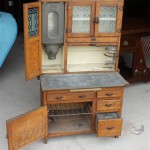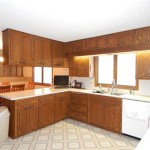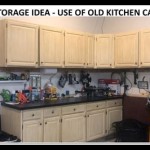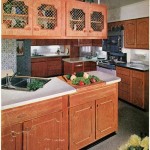LED Profile Lights: Illuminating Kitchen Cabinets with Style and Functionality
LED profile lights have emerged as a prominent solution for enhancing the aesthetics and practicality of kitchen cabinets. These lighting fixtures, characterized by their sleek designs and energy-efficient performance, offer a multitude of benefits for both residential and commercial kitchens. This article explores the features, advantages, installation techniques, and applications of LED profile lights in relation to kitchen cabinetry.
Understanding LED Profile Lights
LED profile lights, also known as linear LED lights or strip lights, consist of a series of Light Emitting Diodes (LEDs) mounted on a flexible circuit board or rigid aluminum profile. This profile often acts as a heat sink, dissipating heat generated by the LEDs and ensuring their longevity. The LEDs are typically covered by a diffuser, which helps to spread the light evenly and minimize glare.
The key components of an LED profile light system include the LED strip, the aluminum profile, the diffuser, the end caps, and the power supply. The LED strip provides the illumination, while the aluminum profile provides structural support, heat dissipation, and a mounting surface. The diffuser softens the light and reduces harsh shadows. The end caps provide a clean and finished look, and the power supply converts mains voltage to the low voltage required by the LEDs.
LED profile lights are available in a variety of lengths, widths, and light output levels, allowing for customized lighting solutions to suit specific kitchen cabinet configurations. They also come in different color temperatures, ranging from warm white (around 2700K) to cool white (around 6500K), and even color-changing RGB options, allowing for a customized ambiance. The flexibility in design and functionality makes them a versatile choice for modern kitchen lighting.
Benefits of Using LED Profile Lights in Kitchen Cabinets
The adoption of LED profile lights for kitchen cabinets presents numerous advantages over traditional lighting options such as halogen or incandescent bulbs. These benefits are primarily centered around energy efficiency, longevity, aesthetics, and performance.
Energy Efficiency: LEDs are renowned for their energy-saving capabilities. They consume significantly less power than traditional light sources, reducing electricity bills and minimizing environmental impact. This is a significant advantage for kitchens, where lights are often used for extended periods.
Long Lifespan: LED profile lights boast a significantly longer lifespan compared to halogen or incandescent bulbs. This extended lifespan reduces the frequency of bulb replacements, saving both time and money in the long run. The reduced maintenance makes them a convenient choice for areas that are difficult to access.
Low Heat Emission: LEDs generate very little heat compared to traditional lighting. This reduces the risk of overheating and damaging cabinet interiors, particularly sensitive materials like wood or laminates. The low heat emission also contributes to a more comfortable kitchen environment.
Customizable Light Output: LED profile lights offer a range of dimming capabilities, allowing users to adjust the light output to suit their specific needs and preferences. This flexibility is particularly useful in kitchens, where different lighting levels may be required for various tasks, such as food preparation, dining, or creating ambiance.
Aesthetic Appeal: The sleek and minimalist design of LED profile lights enhances the overall aesthetics of kitchen cabinets. They can be seamlessly integrated into the cabinet structure, providing a clean and modern look. Their versatility allows them to be used to highlight specific features of the kitchen, such as countertops, backsplashes, or decorative elements.
Improved Visibility: Properly placed LED profile lights improve visibility inside cabinets and on countertops, making it easier to find items and perform tasks. This improved visibility enhances safety and efficiency in the kitchen.
Installation Techniques and Considerations
The successful implementation of LED profile lights in kitchen cabinets hinges on proper installation. The process typically involves several steps, from planning and preparation to wiring and mounting. Careful consideration must be given to safety regulations and electrical codes.
Planning and Preparation: Before commencing the installation, it’s essential to carefully plan the placement of the LED profile lights. Consider the desired lighting effect, the size and shape of the cabinets, and the location of electrical outlets. Measure the required lengths of the LED strips and aluminum profiles and ensure all necessary components are available.
Wiring: The wiring of LED profile lights requires careful attention to detail and adherence to electrical safety standards. Typically, a low-voltage power supply is connected to the mains voltage and then wired to the LED strips. It is important to ensure that the power supply is properly rated for the total wattage of the LED strips being used. If the wiring is complex, a qualified electrician should be consulted.
Cutting and Mounting: The aluminum profiles can be cut to the desired length using a saw or cutting tool. The LED strips can typically be cut at designated cut points, which are usually marked on the strip. The aluminum profiles are then mounted to the inside of the cabinets using screws, adhesive tape, or clips. Ensure that the mounting surface is clean and dry before attaching the profiles.
Connecting the LED Strips: The LED strips are then carefully attached to the aluminum profiles, ensuring that they are properly aligned and secured. The diffuser is then snapped into place over the LED strip. End caps are added to the ends of the profile to provide a clean and finished look.
Testing and Adjustments: After the installation is complete, test the LED profile lights to ensure they are functioning correctly. Check that the light is distributed evenly and that there are no dark spots or flickering. Adjust the position of the lights if necessary to achieve the desired lighting effect.
Safety Precautions: When working with electrical components, always disconnect the power supply and follow all safety guidelines. Use appropriate tools and safety equipment, such as gloves and eye protection. If unsure about any aspect of the installation, consult a qualified electrician.
Applications of LED Profile Lights in Kitchen Cabinets
LED profile lights offer a wide range of applications for illuminating kitchen cabinets, enhancing both their aesthetic appeal and functional utility. These applications span from under-cabinet lighting to interior cabinet illumination and accent lighting.
Under-Cabinet Lighting: This is perhaps the most common application of LED profile lights in kitchens. By mounting the lights under the upper cabinets, they providetask lighting for countertops, making food preparation and other kitchen tasks easier and safer. Under-cabinet lighting also adds a touch of elegance to the kitchen, highlighting the backsplash and creating a warm and inviting ambiance.
Inside-Cabinet Lighting: Installing LED profile lights inside cabinets provides illumination for those hard-to-see areas. This is especially useful for pantry cabinets, spice racks, and dark corners. The lights can be activated by a door sensor, automatically turning on when the cabinet is opened and off when it is closed. This adds convenience and efficiency to kitchen activities.
Toe-Kick Lighting: LED profile lights can be installed along the toe-kick area of the base cabinets to create a subtle and stylish accent lighting effect. This type of lighting adds depth and dimension to the kitchen and can also serve as a night light, providing ambient light for navigating the kitchen in the dark.
Glass-Front Cabinet Lighting: For cabinets with glass doors, LED profile lights can be used to showcase decorative items, glassware, or collectibles. The lights can be mounted along the top or bottom of the cabinet, creating a beautiful and eye-catching display. The light can also be diffused to create a softer and more subtle effect.
Drawer Lighting: Integrating LED profile lights into drawers can significantly improve visibility and accessibility. The lights can be wired to a sensor that activates them when the drawer is opened, making it easier to find items even in the back of the drawer. This is particularly useful for utensil drawers, pantry drawers, and spice drawers.
Island Lighting: LED profile lights can be integrated into the design of kitchen islands, providing both task lighting and accent lighting. They can be mounted under the countertop overhang, along the base of the island, or even embedded within the island’s structure to create a unique and modern lighting effect.

How To Install Led Under Cabinet Lighting In Kitchen Furniture Design Light Sp Z O

Hot Slim Led Profile Kitchen Cabinet Strip Light With Plastic Cover China Factory Aluminum Made In Com

Led Cabinet Shelf Layer Light V Shape Aluminum Profile Strip Lights Channel Cover 12v Kitchen Cabinets Closet Shelves Lamps China Magnetic Track Manufacturer

Klus Design Releases New Kitchen Cabinet Led Extrusion

All You Need To Know About Diffe Types Of Lights Kitchen Wall Bathroom Lighting Design Tv

Cabinet Profile Light Harold Electricals

Led Flexi Strip Light Kit Ip65 Rated Modern Kitchen Cabinet Design Interior

Eti 18 In 9 Watt Led Under Cabinet Light Grow Adjustable Beam Angle 3 Color Options And Mode Indoor Gardening 53508101 The Home Depot

How To Make A Kitchen Look Brighter Guide On Lighting Options

Bar Light Fixtures Kitchen Under Cabinet Lighting
Related Posts








